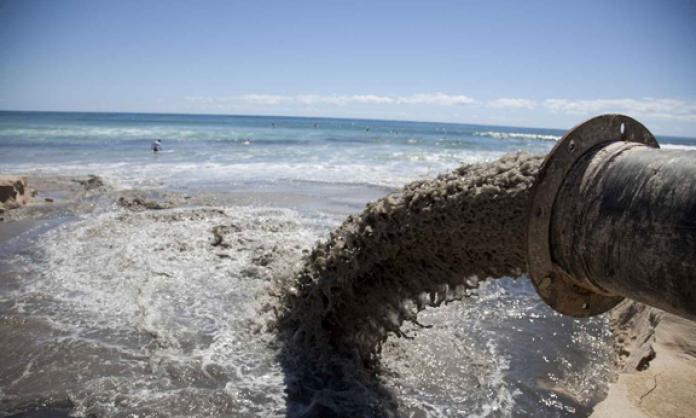Today’s environmental crisis is neatly summed up by New Yorker cartoonist Tom Toro. Three children and a man in a tattered suit are sitting around a small fire in a post-apocalyptic urban landscape. The man says to the children: “Yes, the planet got destroyed, but for a beautiful moment in time we created a lot of value for shareholders”.
That “beautiful moment in time” is now. The destruction of the global environment is accelerating by the day.
The most talked about aspect of this crisis is climate change. Scientists have known about the link between the burning of fossil fuels and the warming of the planet for nearly half a century. Yet global emissions are higher today than ever.
The consequences of this are already being felt. The global average temperature last year was one degree above the norm for 1951-80. That might not sound like much, but we should think of this by analogy with what happens to the human body when we get a fever. A blood temperature of one degree above normal is enough to cause severe discomfort – fatigue, hot flushes, sweating, chills and so on.
That’s what’s happening to the planet. And it’s just the start. The temperature rises are increasing exponentially. A 2016 study in the journal Science Advances found that, based on the emissions trajectory, the world could warm by between 4.8 and 7.4 degrees Celsius by the end of the century.
Hopefully, you’ve never run a fever of 5 degrees. If you have, you’re lucky to be alive. The world at 5 degrees warmer would be very different from the one we live in today.
The apocalyptic scenario is real. But even assuming we avoid it and keep warming below the 2 degree limit set at the UN climate summit in Paris in 2015, the result will still be an environmental disaster on a scale unknown in human history.
Recent events give you for a feel for what might be in store. The past few decades have brought an increase in the frequency of natural disasters like severe storms, cyclones, floods, heat waves, droughts and bushfires.
Data from the US National Oceanic and Atmospheric Administration show that the number of disasters striking the US that cost more than US$1 billion rose from an average of 2.7 per year in the 1980s to 10.5 per year for this decade to date. It’s a similar picture in other parts of the world.
Here in Australia, we’re already suffering more frequent heat waves in summer, along with the increased risk of bushfires. But perhaps the clearest sign that something is wrong is the parlous state of the Great Barrier Reef.
More than 90 percent of the reef is estimated to have been affected by coral bleaching – a result of rising water temperatures and increasing ocean acidity caused by climate change. If current trends continue, most of the reef will be dead by 2050.
Climate change is bad enough, but it’s just one among several existential environmental threats we face.
A recent article by British journalist George Monbiot made the case that “two other issues have such huge and immediate impacts that they push even this great predicament into third place”.
The top two threats listed by Monbiot are industrial fishing, which is degrading ocean ecosystems to the point of collapse, and the “erasure of non-human life from the land by farming”. The latter was brought into sharp relief by a 2017 study from Germany that found that insect populations in nature reserves had declined by 76 percent in 27 years.
“The most likely cause”, Monbiot says, “is that the land surrounding those reserves has become hostile to them: the volume of pesticides and the destruction of habitat have turned farmland into a wildlife desert”.
Insects are the main source of food for many birds and other animals. They also play a crucial role in pollinating plants. A collapse in insect populations would accelerate the existing rate of deterioration of the ecosystems on which we depend for our survival.
Beyond this “top three”, there are innumerable other environmental threats. To name just a few: widespread animal and plant extinctions; the filling of our oceans and waterways with plastic waste; the poisoning of air, land and water by industrial pollution; and the spread of toxic chemicals through the food chain.
Given this, you might expect that those at the top of our society – the corporate moguls and politicians who occupy the commanding heights of the global economy – would be convinced by now of the need for a change. You would, unfortunately, be wrong.
The ruling class has learnt to talk the talk on climate change and other environmental issues. But the rhetoric conceals the reality of an economic system that rolls on as if nothing is happening – creating untold wealth for the richest few with little regard for the environment or anything else that might get in the way.
And why, after all, would we expect the rich to care about the damage they’re doing to the planet? They’re not the ones who face the consequences of environmental destruction. They can simply buy their way out – retreating to well-protected enclaves where they can continue to live their lives of privilege and indulgence without a thought for the millions suffering for their excess.
We should be clear on this point – it’s not the supposed “greed” of ordinary people that’s to blame for the dire situation we’re in. A recent study by Oxfam, for example, found that the richest 10 percent of people produce half the world’s fossil-fuel emissions, while the poorest half produce just 10 percent of emissions.
Too often, the environment movement has been content to tinker with the system – protesting and lobbying politicians to enact relatively small-scale reforms.
In the worst cases, people actually advocate a retreat from political life and a focus on individual lifestyle changes – about as effective as trying to drain the ocean with a bucket.
If these approaches worked, then the last half century of environmental campaigning – since ecological awareness began to grow in the 1960s – would have achieved something. There have been small victories, but when you look at the overall picture, today we’re in a worse situation than ever.
We need more than just tinkering around the edges. Capitalism – in which the competitive drive to profit rules – cannot solve the environmental crisis.
We need to overturn the system: to smash the drive to profit, and build a socialist economy based on collective control of production and genuine democracy.
Based on current technology, we could rapidly shift towards genuine sustainability – a 100 percent renewable energy system, massively expanded public transport, a big expansion of existing recycling systems, a clean-up of polluting industries and much more besides. That’s a vision of the future worth fighting for.











